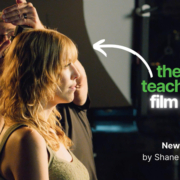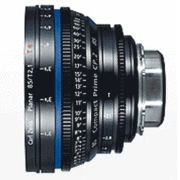CINEMATOGRAPHY MENTORSHIP – SHANE HURLBUT, ASC
Every successful filmmaker has benefited from a few mentors that helped spark their career in the film industry. Mentorships come in all shapes and sizes, some direct and others indirect. Shane Hurlbut, ASC has benefitted from numerous mentorships to get to the position of lensing multi-million dollar films and becoming an ASC cinematographer. Some were cinematography mentors and others were mentors that helped him become the man he is today.
It’s inconceivable to think that we can reach our full potential alone. While following courses and learning new techniques is very important, there’s another side to growth that can only be achieved through mentorship.
Let’s plunge into Shane’s greatest mentors below!
SHANE’S FATHER
LOYALTY & WORK ETHIC
Mentors come in all shapes and sizes, and sometimes they are the people closest to us growing up. For Shane, one of his first mentors was his father. In his youth, Shane loved baseball and looked up to his father who played AAA in New Jersey for the Boston Red Sox. Suddenly, he was called up to the big show – all of his hard work had finally paid off.
However, life took a turn. Just before his debut, the grandfather who raised him passed away. All of a sudden, his grandmother was left with nobody to run the farm. So, Shane’s father gave up his Big League dreams in order to become a farmer.
The whole concept of loyalty was ingrained in Shane from a young age. It was something he learned directly from his father. Not only that but it was Shane’s father who instilled in him his legendary work ethic.
CALEB DESCHANEL, ASC
VISUAL INSPIRATION
When Shane was a kid, his parents took him to the State Theater to see The Natural, lensed by the great Caleb Deschanel. It was a small, local theater in their little city of Auburn, New York. Shane was blown away by the fantastical nature of how Caleb shot baseball and how he turned it into such a lyrical story. It was not only about the mechanics of baseball, it felt like a visual love letter to the game. You can see some similar visual themes play out in some of the sports films Shane shot later on – like Mr. 3000.
Shane recalls Deschanel’s breathtaking cinematography and was inspired by it. Back then, Shane did not yet know that he would pursue a career in cinematography. In fact, at that time he thought he would go into radio. However, later on, he switched gears to film, and Deschanel’s visual poetry was always at the forefront of his personal inspiration. Shane followed his work, watching every film he shot, like The Black Stallion, The Patriot, The Passion of the Christ, Jack Reacher, and The Lion King.
Another cinematographer who looked up to Caleb Deschanel from a young age is Alice Brooks, ASC. Learn more about the DP of In the Heights with our full interview.
ROGER DEAKINS, ASC
MASTERFUL CINEMATOGRAPHY
When Shane was a key grip and gaffer, he particularly looked up to Roger Deakins in terms of how he lenses films, conveys emotion, moves the camera, and the quality of light he uses. At that time, Shane was still learning about what all of these techniques were in order to create a mesmerizing theatrical experience.
The films that really grabbed Shane’s attention were those in collaboration with the Coen Brothers, like Barton Fink, The Hudsucker Proxy, and Fargo. From the light to the shots and composition, Shane studied Deakins’ work as he progressed from a gaffer to a cinematographer.
DANIEL PEARL, ASC
BOLD CREATIVITY
Early on in his career, Shane worked as a key grip on music videos and commercials for Daniel Pearl. At that time, Shane was his right-hand person for everything from moving camera cranes to building some impressive camera rigs. This was a huge learning experience for Shane that elevated him in his craft tenfold.
Daniel Pearl is a cinematographer who takes chances and tries new things. So, he showed Shane how to really push the limits of what was possible. With his work, Pearl essentially created the look for MTV. He lensed some of the largest music videos in history and was a massive mentor and influence on Shane when he was first starting out as a film technician.
JOSEPH YACOE
HUMAN SWISS ARMY KNIFE

Shane was a gaffer for Joseph Yacoe, who took him all over the world from Spain to Morocco to Argentina, and everywhere in between. Yacoe liked how Shane had a background as both a key grip and a gaffer. So, Shane served as a two-in-one package where he could light the sets, hop on the crane, and help deliver his grand vision from distant locales.
Yacoe filmed a lot of hair commercials where he would Dutch in and swoop around. So, he taught Shane how to light for beauty.
HERB RITTS
MULTI-DIMENSIONAL LIGHTING
 Yacoe introduced Shane to Herb Ritts when he started shooting his commercials and music videos. Shane first began gaffing for Herb Ritts while Yacoe shot his projects, and then was later hired by the late icon as a lighting director-designer. Shane continued to travel the world and lit every one of Herb Ritts’ photographs from 1991 until 1996.
Yacoe introduced Shane to Herb Ritts when he started shooting his commercials and music videos. Shane first began gaffing for Herb Ritts while Yacoe shot his projects, and then was later hired by the late icon as a lighting director-designer. Shane continued to travel the world and lit every one of Herb Ritts’ photographs from 1991 until 1996.
Herb Ritts taught Shane how to interact with talent and make them feel comfortable. Shane also realized that surrounding yourself with great people is 80% of being a great cinematographer or director. “Yes, you need to have talent,” explains Shane, “but it’s also the talent you surround yourself with that matters.”
Ritts also showed Shane how to light the female body, working with nudes and where to place the light, and how he used contrast with background as well as creating shade. Whether it was sticks in Africa or fabric that flew up in the air that created a shade, Ritts showed Shane how to shape light in a way that produced multiple dimensions.
KEVIN KERSLAKE
FEARLESS INNOVATION
Kevin Kerslake was Shane’s experimental mentor. Where Daniel Pearl was ballsy with exposures, Kerslake was a mad scientist with everything photochemical. They would shoot on Super 8 and process it in their bathtubs. Then, they would drag the stock down their driveways, process it, and then make a negative of it, and then an interpositive, and then an internegative, and then another positive, and then an internegative again, and then a positive on top of that, and then they put their concoction into the color corrector. Kerslake not only wanted to make it different, he wanted to push the boundaries of EVERYTHING. He was a cocktail maker of stocks.
Kerslake shaped Shane in his raw approach to lighting and how he processed film. Take Terminator Salvation, for example. He took the Oz process, which was a photochemical process developed by Mike Zacharia and Bob Olson where you take your color negative and put it through a black and white fixer at the end. It strips most of the color from the negative and leaves 10-20 times the silver content in the negative. So, it almost becomes silvery in all of its tones.
Through Kerslake’s tutelage, Shane would never look at the photochemical process the same again. He changed how he saw the pull process, the push process, skip bleach, interpositive, and internegative. Learning these techniques helped make Shane marketable. People loved his extreme exposures and the way he treated film. It was very new and very different.
THE VALUE OF MENTORSHIP
The way to progress not only in your craft but the industry is through your mentorships. However, according to Shane, the biggest takeaway for mentoring is realizing that failure is NOT failing. Failure is what pushes you out of your comfort zone because you will never leave your comfort zone unless you fail. If you’re comfortable, you will stay with what works and not push yourself to try new things.
Shane would find a way to turn his failures into success. Say a commercial or music video failed. What he did to fail on that particular piece might serve as the special sauce for another project. For example, on A Casa Tutti Bene, Shane used the HDR function on the RED to try and hold detail out the window of a ferry that sailed from Naples to the island of Ischia. They didn’t have the budget to light it, so what Shane discovered was anytime people moved in front of the window, he experienced artifacting. They ended up only using the footage from the A track and scrapped the X track. However, Shane saw a possibility with it for the film Holidate.
In the scene, the protagonists are at a Cinco de Mayo party and get completely blitzed on tequila. Shane wondered what if he used the newfound HDR technique for a positive advantage. The sequence turned out to be very creative and unique. See for yourself below!
Shane would have never tried to push the boundaries to achieve something truly different if it weren’t for his mentors, Kevin Kerslake and Daniel Pearl. So, do yourself a favor and push beyond your comfort zone and pursue mentorships. Trust us, your future self will thank you.















